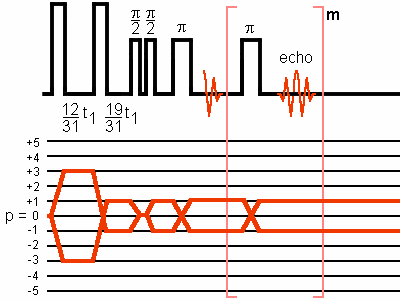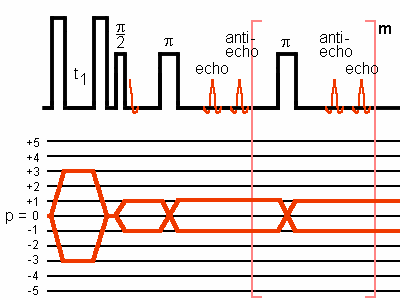MQ Quadrupolar Carr Purcell Meiboom Gill MAS
Larsen and coworkers introduced CPMG sequence into MQMAS experiment, that is, a train of selective rotor-synchronized Pi pulses during the MQMAS acquisition period.
The central-transition MAS echoes are successively accumulated to enhance the overall intensity. This approach generates sidebands along the F2 dimension.

This figure represents the amplitude-modulated split-t1 preparation for 3Q-QCPMG-MAS sequence applied to spin I = 3/2.
Selecting both pathways should generate pure absorption 2D lineshape.
ACQUISITION: Hyper-complex or TPPI
Split-t1 approach avoids shearing transformation.

This figure represents the amplitude-modulated split-t1 preparation for 3Q-QCPMG-MAS sequence applied to spin I = 5/2.
Selecting both pathways should generate pure absorption 2D lineshape.
ACQUISITION: Hyper-complex or TPPI
Split-t1 approach avoids shearing transformation.
Lefort and coworkers introduced a z-filter preparation for 3Q-QCPMQ-MAS experiment.

This figure represents the z-filter preparation for 3Q-QCPMG-MAS sequence applied to spin I = 5/2. The echo and anti-echo signals are observed.
ACQUISITION: Hyper-complex or TPPI
Shearing transformation is required to obtain 2D isotropic (in F1 dimension) anisotropic (in the F2 dimension) correlation spectrum.
